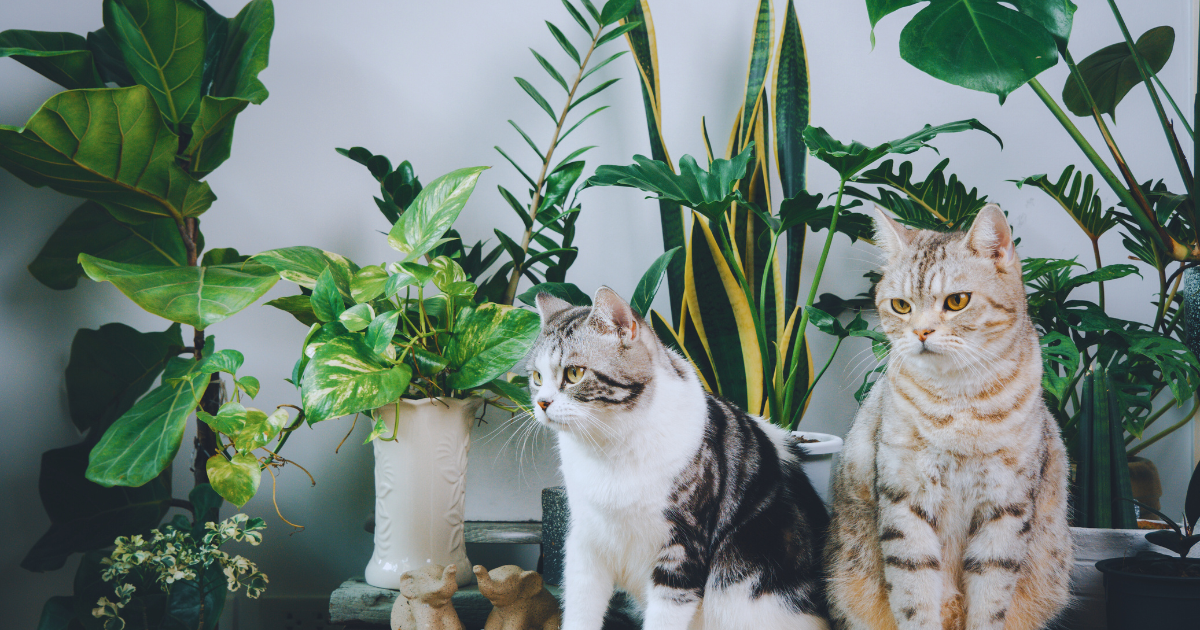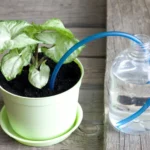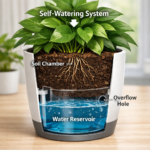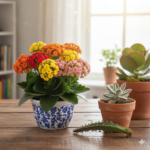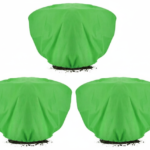The Purple Waffle Plant, admired for its unique foliage and vibrant colors, harbors a hidden danger for cats due to its toxic nature. This plant contains insoluble calcium oxalate crystals in its leaves and stems, which can cause significant health issues if consumed by felines. Cats may experience oral irritation, swelling of the mouth and throat, drooling, vomiting, and difficulty swallowing after ingesting parts of the plant.
Given cats’ natural curiosity and tendency to explore their surroundings, pet owners must recognize the potential risks posed by indoor plants like the Purple Waffle. Preventative measures such as keeping toxic plants out of reach, opting for cat-friendly alternatives, and promptly seeking veterinary care if ingestion occurs are essential for ensuring the safety and well-being of our beloved pets. In this article, we’ll discuss practical safety tips to help you safeguard your cats from the harmful effects of the Purple Waffle Plant.
What is the Purple Waffle Plant?

The Purple Waffle Plant, scientifically known as Hemigraphis alternata, is a popular ornamental houseplant prized for its striking appearance and easy maintenance. Native to tropical regions, particularly Southeast Asia and parts of Africa, this plant features distinctive leaves deeply puckered with prominent purple veins, resembling a waffle pattern, hence its name.
Typically grown as an indoor plant, the Purple Waffle Plant thrives in warm, humid environments with indirect sunlight. It is favored for its low maintenance requirements and ability to add a splash of color and texture to indoor spaces. The plant can reach heights of up to 12 inches and is often used in decorative arrangements or as a standalone specimen.
While visually appealing, pet owners should know that the Purple Waffle Plant contains toxic compounds, such as insoluble calcium oxalate crystals in its leaves and stems, which can pose health risks to cats if ingested.
How Can I Tell if a Plant is Toxic?
Determining whether a plant is toxic, especially if you have pets or young children, is crucial for maintaining a safe environment. Here are some steps you can take to identify poisonous plants:
- Consult Reputable Sources: Resources like the ASPCA (American Society for the Prevention of Cruelty to Animals) website have extensive lists of toxic and non-toxic plants for pets. The Pet Poison Helpline and local veterinary services can also provide valuable information.
- Check Plant Labels and Tags: Many plants come with tags or labels that include safety information. When purchasing a new plant, look for any warnings or toxicity information the seller provides.
- Use Plant Identification Apps: Several apps identify plants and explain their toxicity. Apps like PlantSnap, PictureThis, and iNaturalist can be helpful tools.
- Research Online: A quick internet search using the plant’s common or scientific name can yield information about its safety. Look for information from reliable horticultural websites, botanical gardens, or university extension programs.
- Ask Experts: When in doubt, ask an expert. Contact your local nursery, garden center, or professional botanist for advice on plant toxicity.
- Observe Plant Symptoms in Pets: If you suspect your pet has ingested a plant and is showing symptoms like vomiting, drooling, or lethargy, it might indicate toxicity. Seek veterinary care immediately.
Why Cats Are Attracted to Houseplants?
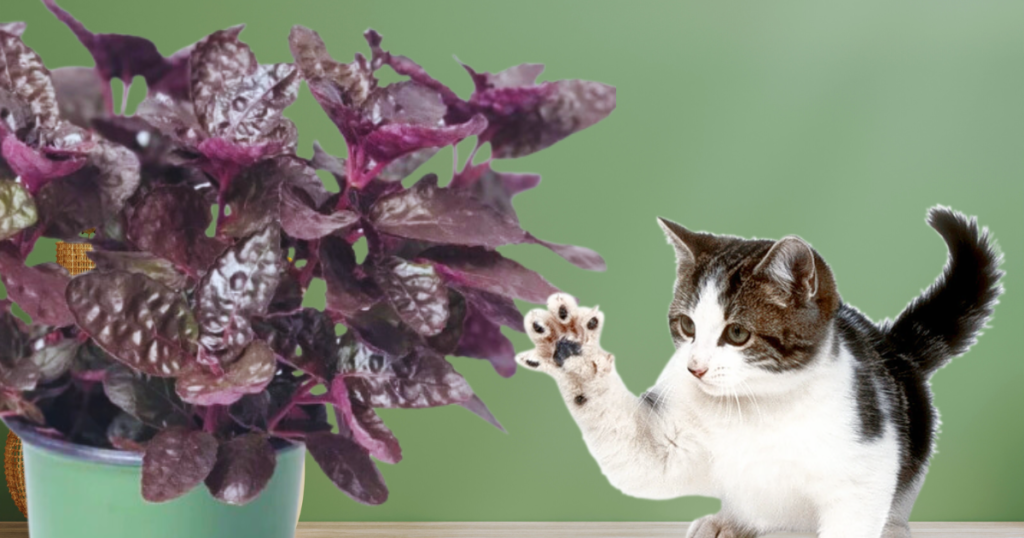
Cats are naturally curious creatures, and several factors can explain their attraction to houseplants:
- Natural Instincts: Cats have an instinct to explore their environment. Houseplants often mimic the outdoor vegetation they would encounter in the wild, sparking their interest.
- Curiosity and Playfulness: Cats are inherently curious and playful. They can be intrigued by the movement of leaves and the texture of plants, making houseplants an irresistible plaything.
- Nutritional Deficiencies: Some cats might chew on plants to compensate for dietary deficiencies. For instance, they might seek out greens to help with digestion or to provide nutrients that their regular diet might lack.
- Boredom and Mental Stimulation: Indoor cats, in particular, can get bored and look for new activities to keep themselves entertained. Houseplants can provide a novel source of stimulation and activity.
- Sensory Exploration: Cats use their mouths to explore and understand their surroundings. Chewing on or rubbing against plants allows them to gather information about their environment.
Why does Plant Toxicity Matter?
Understanding plant toxicity is essential for maintaining a safe home environment for your cat. Many plants contain substances that can cause mild to severe health issues, ranging from gastrointestinal upset to organ failure. Recognizing and preventing access to these plants can save your cat from unnecessary suffering and potential emergencies.
Common Toxic Plants for Cats
Lilies (Lilium species)
Lilies are among the most dangerous plants for cats. All parts of the lily plant, including the flowers, leaves, and pollen, are highly toxic. Ingesting even a small amount can lead to severe kidney failure in cats.
Sago Palm (Cycas revoluta)
The sago palm is a popular ornamental plant but is highly toxic to cats. Ingesting any part of the plant, especially the seeds, can cause severe liver damage and even death.
Philodendron
Philodendrons are common houseplants known for their lush, green foliage. However, they contain calcium oxalate crystals that can cause oral irritation, drooling, and vomiting in cats.
Also known as devil’s ivy, pothos is a hardy plant that can thrive in various conditions. Unfortunately, it contains insoluble calcium oxalates, which can cause oral irritation, vomiting, and difficulty swallowing in cats.
Oleander is a beautiful but deadly plant. All its parts are highly toxic to cats, causing severe gastrointestinal, cardiovascular, and central nervous system issues.
Dieffenbachia (Dumb Cane)
Dieffenbachia, commonly known as dumb cane, contains oxalate crystals that can cause intense oral irritation, drooling, and swelling of the mouth and throat if ingested by cats.
Aloe Vera
While aloe vera is known for its medicinal properties for humans, Aloe vera toxic to cats. Ingesting aloe vera can cause vomiting, diarrhea, and lethargy in felines.
Azaleas and Rhododendrons
Azaleas and rhododendrons contain grayanotoxins, which can lead to vomiting, drooling, diarrhea, and, in severe cases, coma or death in cats.
Tulips (Tulipa)
Tulips are popular spring flowers, but their bulbs are incredibly toxic to cats. Ingesting tulip bulbs can cause significant gastrointestinal distress, including vomiting and diarrhea.
Chrysanthemums (Dendranthema)
Chrysanthemums, also known as mums, contain pyrethrins, which can cause vomiting, diarrhea, drooling, and incoordination in cats.
Is the Purple Waffle Plant Toxic to Cats?
As a responsible cat owner, ensuring the safety of your feline friend involves being aware of the potential hazards in your home, including houseplants. The purple waffle plant, also known as Hemigraphis alternata, is famous for its vibrant purple foliage and easy care. But is it safe for cats?
The good news is that the purple waffle plant is not toxic to cats. According to the ASPCA and other reputable sources, this plant is non-toxic, meaning it won’t harm your cat if they happen to nibble on its leaves. However, while it may not be poisonous, monitoring your cat’s interaction with any plant is still a good idea. Ingesting large amounts of any non-toxic plant can still lead to gastrointestinal upset.
In conclusion, the purple waffle plant can be a safe and beautiful addition to your home, posing no significant threat to your feline companions. Always ensure double-checking plant safety to maintain a cat-friendly environment.
Symptoms of Purple Waffle Plant Poisoning in Cats
The purple waffle plant (Hemigraphis alternata) is known to be non-toxic to cats. However, if your cat consumes a large quantity, it might still experience mild digestive upset. Here are the potential symptoms to watch for:
- Vomiting: Your cat may vomit after ingesting the plant as a way to expel it from their system.
- Diarrhea: Loose stools can occur if the plant material irritates your cat’s digestive system.
- Lethargy: A cat that has ingested a lot of plant material might seem unusually tired or weak.
- Drooling: Increased saliva production can be a response to the plant’s texture or taste.
- Loss of Appetite: Your cat may temporarily lose interest in food.
While these symptoms are generally mild and should resolve independently, monitoring your cat closely is essential. If symptoms persist or worsen, contact your veterinarian for advice. It’s always better to err on the side of caution to ensure your pet’s well-being.
Immediate Steps if Your Cat Ingests a Toxic Plant

If you discover that your cat has ingested a toxic plant, acting quickly is crucial. Here are the immediate steps you should take to ensure your cat’s safety:
- Identify the Plant: Identify the plant your cat has ingested. This information will be helpful when you contact your veterinarian.
- Remove Plant Material: Gently remove any remaining plant material from your cat’s mouth to prevent further ingestion.
- Rinse the Mouth: If your cat allows, rinse its mouth with water to remove any plant residue. Be gentle and avoid causing stress to your cat.
- Observe Symptoms: Monitor your cat for poisoning symptoms, such as vomiting, drooling, difficulty breathing, or lethargy. Note any symptoms to report to your veterinarian.
- Contact Your Veterinarian: Call your veterinarian immediately and provide details about the plant ingested and the symptoms observed. Follow their instructions carefully.
- Call a Pet Poison Hotline: If your veterinarian is unavailable, contact a pet poison hotline for advice. Numbers like the ASPCA Animal Poison Control Center (1-888-426-4435) are available 24/7.
- Follow Professional Advice: Your veterinarian or poison control expert may advise you to bring your cat in for an examination. Follow their instructions precisely, including any first aid measures they recommend.
- Do Not Induce Vomiting: Do not attempt to induce vomiting unless specifically instructed by a veterinary professional, as this can sometimes cause more harm than good.
- Keep the Plant for Identification: Bring a sample of the plant to the veterinary clinic. This can help the vet identify the toxin and determine the best course of treatment.
- Prepare for Emergency Transport: If advised to bring your cat to the clinic, prepare a safe and comfortable carrier for transport. Keep your cat calm and warm during the journey.
Non-Toxic Plants Safe for Cats
Creating a cat-friendly home involves choosing safe plants for your feline friends. Here’s a list of non-toxic plants that are safe for cats and can beautify your living space without posing any risk.
Spider Plant (Chlorophytum comosum)
Spider plants are easy to care for and non-toxic to cats. Their long, arching leaves make them attractive additions to any home.
Boston Fern (Nephrolepis exaltata)
Boston ferns are safe for cats and can add a touch of greenery to your indoor spaces. They prefer humid environments, making them perfect for bathrooms or kitchens.
Areca Palm (Dypsis lutescens)
Also known as the butterfly palm, the areca palm is a cat-safe plant that can grow quite tall, adding a tropical vibe to your home.
Cat Grass (Dactylis glomerata)
Cat grass is grown explicitly for cats to nibble on. It’s a great way to satisfy your cat’s chewing instincts without any risk of toxicity.
Calathea
Calatheas are known for their lovely leaves and are completely safe for cats. They thrive in low to medium-light conditions, making them versatile houseplants.
Bamboo Palm (Chamaedorea seifrizii)
Bamboo palms are non-toxic to cats and can grow up to 5-7 feet tall indoors. They are excellent for adding height and greenery to a room.
African Violet (Saintpaulia)
African violets are safe for cats and bring a splash of color with their beautiful purple, pink, or white flowers. They prefer indirect sunlight and are perfect for windowsills.
Baby’s Tears (Soleirolia soleirolii)
Baby’s tears are low-growing, lush plants that are safe for cats. They make excellent ground cover in pots or terrariums.
Prayer Plant (Maranta leuconeura)
Prayer plants are named for their unique leaf movements and are safe for cats. They have attractive, patterned leaves and prefer indirect light.
Peperomia
Peperomias are small, easy-to-care-for plants that are non-toxic to cats. They come in various leaf shapes and colors, making them a versatile choice for plant enthusiasts.
Read our post to know : How to Care for Peperomia: Essential Tips for Success
Haworthia
Haworthias are small succulents that are safe for cats. They are low-maintenance and can thrive in bright, indirect light.
Swedish Ivy (Plectranthus verticillatus)
Swedish ivy is a trailing plant that is safe for cats. It’s easy to grow and can be used in hanging baskets to keep it out of your cat’s reach.
Friendship Plant (Pilea involucrata)
Friendship plants are safe for cats and have unique, textured leaves. They thrive in medium light and are relatively low-maintenance.
Lipstick Plant (Aeschynanthus radicans)
Lipstick plants are named for their tubular red flowers. They are non-toxic to cats and make excellent hanging plants.
Ponytail Palm (Beaucarnea recurvata)
Despite its name, the ponytail palm is not a true palm but is safe for cats. It has a unique appearance with a bulbous trunk and long, thin leaves.
FAQs:
Can cats eat non-toxic plants safely?
Yes, cats can nibble on non-toxic plants without significant health risks. However, it’s still best to monitor their intake to avoid digestive upset.
How can I prevent my cat from chewing on plants?
Provide alternative sources for your cat to chew on, such as cat grass or interactive toys. You can also place plants out of reach or spray the leaves with deterrent sprays.
Are succulents generally safe for cats?
Not all succulents are safe for cats. While some, like Haworthia, are non-toxic, others, like aloe vera, are harmful. Always check the specific type of succulent before bringing it home.
What should I do if my cat shows symptoms after eating a non-toxic plant?
Even non-toxic plants can cause mild gastrointestinal upset. If symptoms are severe or persistent, contact your veterinarian for advice.
Can I use plant identification apps to check for toxicity?
Yes, plant identification apps can help identify plants and provide toxicity information. However, always verify the information from reputable sources like the ASPCA or your veterinarian.
Conclusion
In conclusion, knowing which plants are toxic to cats and preventing access can significantly contribute to your cat’s safety and well-being. By opting for non-toxic plants and understanding the symptoms of plant poisoning, you can create a safer environment for your feline friend to roam and explore. Always consult your veterinarian if you suspect plant ingestion or notice any unusual symptoms in your cat. You can enjoy a harmonious and healthy living space for yourself and your beloved pet with proper care and attention.

